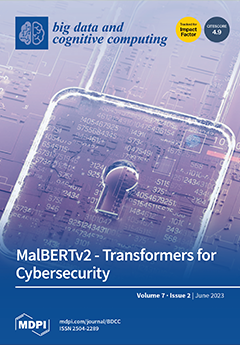Mining and analysis of the big data of Twitter conversations have been of significant interest to the scientific community in the fields of healthcare, epidemiology, big data, data science, computer science, and their related areas, as can be seen from several works in
[...] Read more.
Mining and analysis of the big data of Twitter conversations have been of significant interest to the scientific community in the fields of healthcare, epidemiology, big data, data science, computer science, and their related areas, as can be seen from several works in the last few years that focused on sentiment analysis and other forms of text analysis of tweets related to Ebola, E-Coli, Dengue, Human Papillomavirus (HPV), Middle East Respiratory Syndrome (MERS), Measles, Zika virus, H1N1, influenza-like illness, swine flu, flu, Cholera, Listeriosis, cancer, Liver Disease, Inflammatory Bowel Disease, kidney disease, lupus, Parkinson’s, Diphtheria, and West Nile virus. The recent outbreaks of COVID-19 and MPox have served as “catalysts” for Twitter usage related to seeking and sharing information, views, opinions, and sentiments involving both of these viruses. None of the prior works in this field analyzed tweets focusing on both COVID-19 and MPox simultaneously. To address this research gap, a total of 61,862 tweets that focused on MPox and COVID-19 simultaneously, posted between 7 May 2022 and 3 March 2023, were studied. The findings and contributions of this study are manifold. First, the results of sentiment analysis using the VADER (Valence Aware Dictionary for sEntiment Reasoning) approach shows that nearly half the tweets (46.88%) had a negative sentiment. It was followed by tweets that had a positive sentiment (31.97%) and tweets that had a neutral sentiment (21.14%), respectively. Second, this paper presents the top 50 hashtags used in these tweets. Third, it presents the top 100 most frequently used words in these tweets after performing tokenization, removal of stopwords, and word frequency analysis. The findings indicate that tweets in this context included a high level of interest regarding COVID-19, MPox and other viruses, President Biden, and Ukraine. Finally, a comprehensive comparative study that compares the contributions of this paper with 49 prior works in this field is presented to further uphold the relevance and novelty of this work.
Full article





